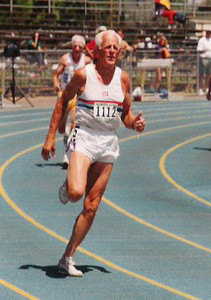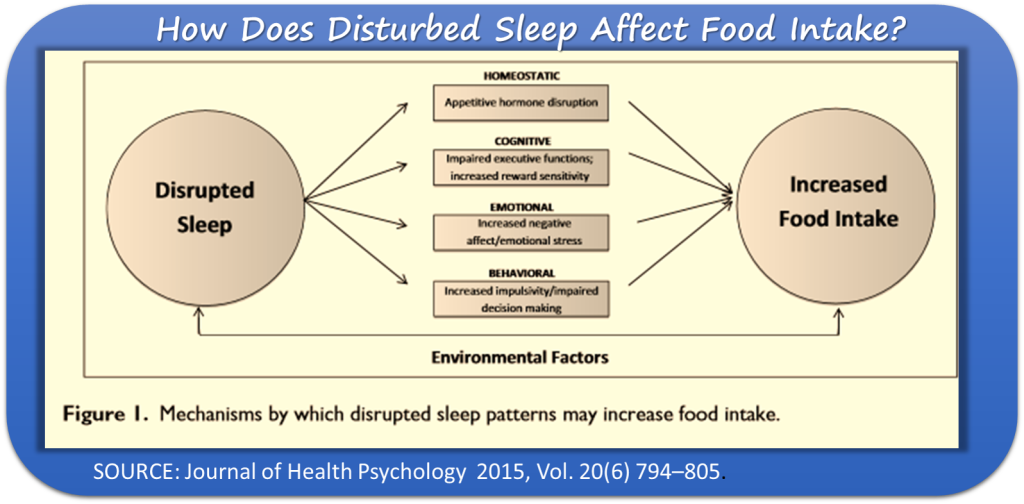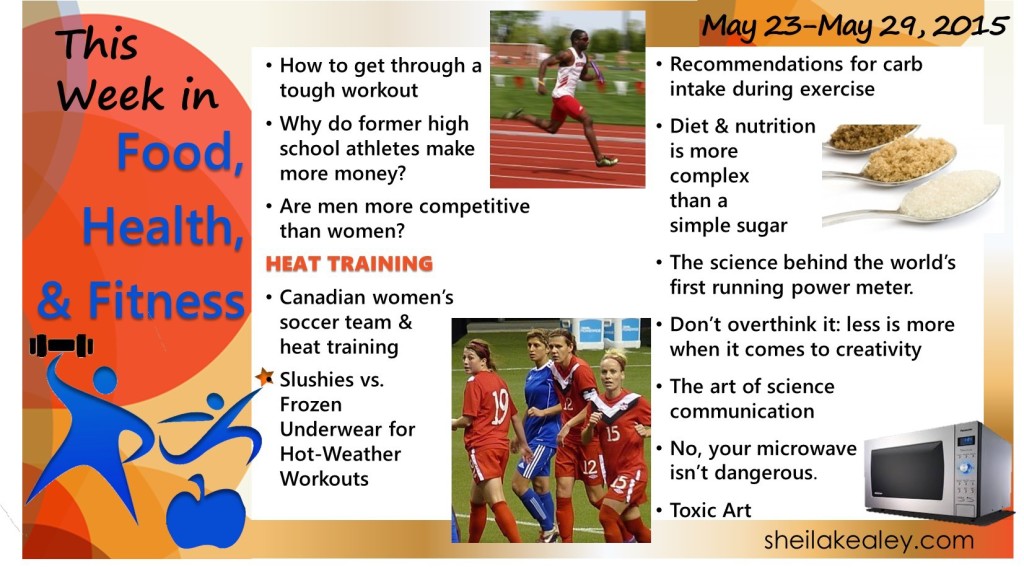This week, read about keeping the elderly moving, how looking at nature helps your brain work better, how sleeping affects your food intake, new recommendations for standing at work, how much fluids athletes need, and a powerful cyclist.

Aging and inactivity: Stop killing the elderly with kindness. This is a terrific article by Travis Saunders, a sedentary behavior expert and Assistant Professor in Applied Human Science at the University of PEI. He explains the importance of physical activity for all ages, and describes how many of the ailments we typically associate with aging are lack of activity.
“Aging is associated with reduced fitness, weaker bones, reduced insulin sensitivity, reduced muscle strength, and reduced balance. Lack of physical activity is also associated with all of those things. This isn’t a coincidence – many (probably most) of the health impacts of aging are not really due to aging at all.”
He encourages us to promote physical activity in elders by considering first if our good intentions are needlessly encouraging sedentary behavior. Let them do cleaning and chores and don’t worry about them walking up and down stairs, it’s good for them to move! (Obesity Panacea)
Children who garden eat more greens. Schools that offer gardening and cooking classes are helping promote good health habits: students are eating more fruits and vegetables than their peers. Classes also contributed to students’ involvement in meal preparation at home. This is a great idea for a school-based health program, and likely has more far-reaching effects that telling children what to eat for good health. (Tulane University Prevention Research Center).
Map of food cravings across the United States: from breakfast tacos in Texas to maple syrup in Vermont – a fun map! (grist.org)

Just looking at nature can help your brain work better. Bringing trees, grass, and parkland into cities has many benefits. Another “greening” strategy is “green roofs” (also called living roof) which are becoming increasingly popular. These roofs help cool buildings, absorb rainwater, provide insulation, and are aesthetically pleasing. New research suggests that viewing these green roofs might help busy office workers and others by improving sustained attention.
Researchers had study subjects view 2 different city scenes for 40 seconds: either a flowering meadow green roof or a bare concrete roof. Participants who briefly viewed the green roof scored better on sustained attention tasks than those who viewed the concrete roof. These results add to the growing body of research showing on the benefits of nature: greening cities with more parks and trees can be important for the health of cities and workplaces. (Washington Post, reporting on Journal of Environmental Psychology, May 2015).
New recommendations for standing at work. A new paper by public health experts in the UK puts an hourly figure on how much we should stand during working hours. The authors recommended breaking up sitting bouts, and initially aiming to stand for 2 hours/day, and eventually increasing standing time to 4 hours/day (everything counts – bathroom breaks, etc.). The evidence that sitting for extended periods is harmful for health is mounting, showing sitting increases risk of diabetes, heart disease, obesity, kidney problems and premature death. (Time, reporting on British Journal of Sports Medicine, June 2015).
How Ikea uses food to trick you into spending. A look at the clever marketing and mind tricks that affect our purchasing behavior. (news.com.au)
The less you sleep, the more you eat. Many factors beyond hunger influence how much we eat. As research on the benefits of sleep continues to grow, studies have shown that sleep affects appetite regulation: the less you sleep, the more you eat. This article reviews the literature on biological, cognitive, emotional, and behavioral factors may lead to poor sleep and affect food intake. (Journal of Health Psychology, June 2015)
You Asked: Can I Scrape Mold Off of Food and Eat It? In most cases, you shouldn’t, because the “threads” of the mold may have penetrated your food. Hard cheeses are an exception. (Time)
5 celebrity-endorsed health tips that aren’t backed by science. Tim Caulfield, professor of law and health policy at the University of Alberta, and author of “Is Gwyneth Paltrow Wrong about Everything?” looks at the evidence behind these popular tips. (money.com)
- Vitamin supplements
- Detoxes and cleanses
- Spot reduction
- 8 cups water/day
- Gluten-free diets
How much fluids do athletes really need? Research is changing what we know about our fluid needs. The most recent studies in the lab show a little dehydration is o.k., and winning performances in the field show that top athletes do finish events a bit dehydrated. Although previous guidelines were to avoid sweating out more than 2% of your body mass, new information suggests that 3 to 6 % dehydration makes more sense. (Alex Hutchinson, Globe and Mail).
Why Do We Experience Awe? Fascinating research – seek out what gives you goosebumps! (New York Times summarizing Journal of Personality and Social Psychology, June 2015).
A powerful cyclist! Olympic Cyclist Vs. Toaster: Can He Power It?
Last Week in Food, Health, and Fitness
Green Forest Carpet photo by Harald Hoyer from Schwerin [CC BY-SA 2.0], via Wikimedia Commons
Share This:
